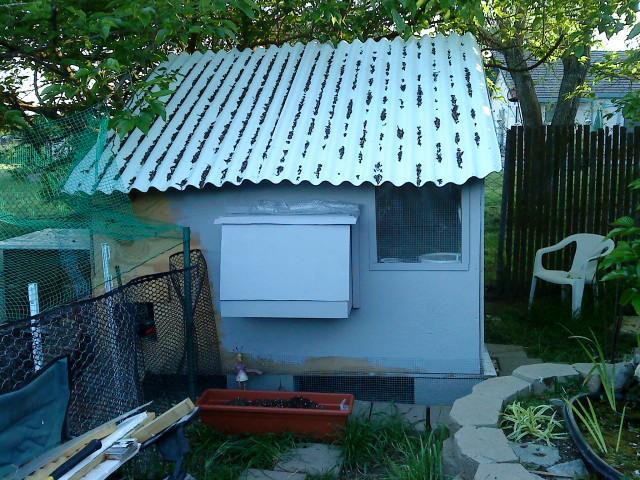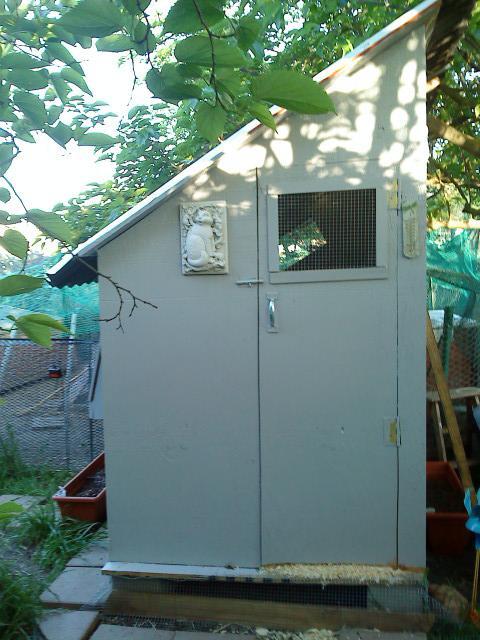- Feb 10, 2011
- 88
- 0
- 39
I'm in coop planning overhaul right now, and have plans scribbled all over my table

That being said, you all will probably see more questions from me here in the next couple of days.
We live in a pretty warm climate (literally, gets over 100 degrees over 100 days of the year), and if it gets down to 32 degrees once or twice we are shocked! With this in mind, I think rather than worrying about sealing the coop up tight from drafts, we have to be more concerned with ventilation. My husband built our dogs a "log cabin" doghouse-not kidding- and he built the walls and the flooring up, and then just set the corrugated roofing on top of support beams and screwed them in.
(this is the stuff I'm talking about in case you're wondering: http://www.lowes.com/pd_12749-1115-153_0__?productId=3010612&Ntt=corrugated+roof&pl=1¤tURL=%2Fpl__0__s%3FNtt%3Dcorrugated%2Broof#BVRRWidgetID)
We live in the city and dont have any real predators other than the neighbors abnoxious outdoor kitties. Would we be able to do the same thing for our chook coop? Or do we need to go the whole 9 yards and install a shingle roof? We were hoping to just install the corrugated roofing at an angle, and have the rain run off that way instead of having to construct trusses for a gable style roof. Any thoughts? Anyone done this or have an example of it in a photo?
I've scoured the BYC coop pages, but would like to know you guys personal experience with preferred (EASY) roofing
Thanks!

That being said, you all will probably see more questions from me here in the next couple of days.
We live in a pretty warm climate (literally, gets over 100 degrees over 100 days of the year), and if it gets down to 32 degrees once or twice we are shocked! With this in mind, I think rather than worrying about sealing the coop up tight from drafts, we have to be more concerned with ventilation. My husband built our dogs a "log cabin" doghouse-not kidding- and he built the walls and the flooring up, and then just set the corrugated roofing on top of support beams and screwed them in.
(this is the stuff I'm talking about in case you're wondering: http://www.lowes.com/pd_12749-1115-153_0__?productId=3010612&Ntt=corrugated+roof&pl=1¤tURL=%2Fpl__0__s%3FNtt%3Dcorrugated%2Broof#BVRRWidgetID)
We live in the city and dont have any real predators other than the neighbors abnoxious outdoor kitties. Would we be able to do the same thing for our chook coop? Or do we need to go the whole 9 yards and install a shingle roof? We were hoping to just install the corrugated roofing at an angle, and have the rain run off that way instead of having to construct trusses for a gable style roof. Any thoughts? Anyone done this or have an example of it in a photo?
I've scoured the BYC coop pages, but would like to know you guys personal experience with preferred (EASY) roofing
Thanks!





